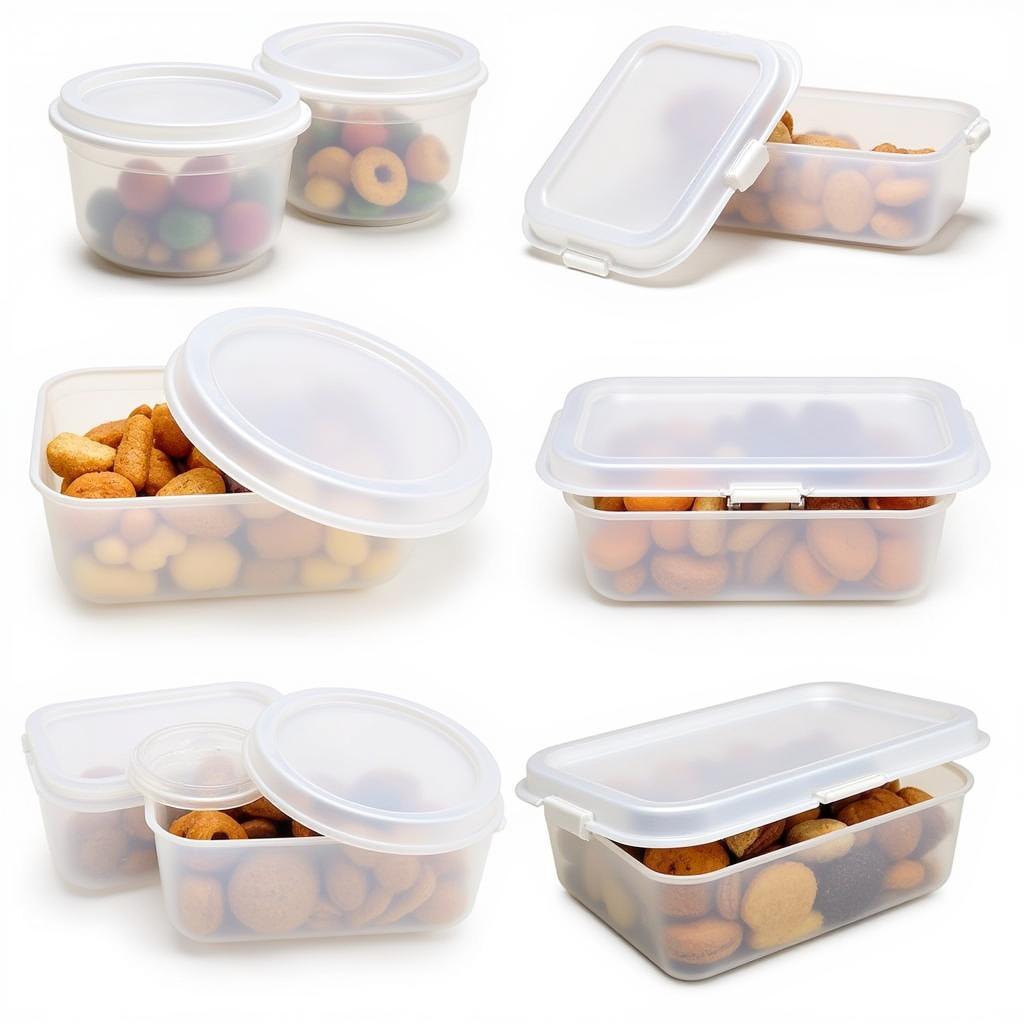Hiding Food. It’s a phrase that evokes a spectrum of images, from squirrels burying nuts for winter to children sneaking vegetables under their napkins. But the reasons behind this seemingly simple act are diverse and fascinating. Why do we hide food? And what are the ingenious ways we do it? Let’s delve into the world of concealed cuisine.
Whether it’s protecting your lunch from officemates with wandering hands, ensuring your dog doesn’t devour the entire Thanksgiving turkey before dinner, or cleverly incorporating healthy ingredients into picky eaters’ meals, hiding food is a skill many of us have employed at some point. It’s a practice that spans cultures and generations, woven into the fabric of our relationship with food. From ancient preservation techniques to modern-day kitchen hacks, the art of hiding food is a testament to human ingenuity.
Why We Hide Food: A Deeper Dive
There are myriad reasons why people conceal food. Sometimes, it’s a matter of survival, as seen in the animal kingdom where creatures cache food to ensure sustenance during lean times. For humans, the motivations can be more nuanced.
- Preservation: One of the earliest reasons for hiding food was to protect it from spoilage. Burying food in cool earth or storing it in hidden cellars were common practices long before refrigeration.
- Protection from Theft: Whether it’s protecting your stash of Halloween candy from siblings or safeguarding your prize-winning pie from competitive bakers, hiding food is often a defensive tactic against potential thieves.
- Picky Eaters: Many parents resort to culinary camouflage to ensure their children consume nutritious foods. Pureeing vegetables into sauces or finely chopping them into ground meat are common strategies.
- Surprise Element: Hiding food can also be a delightful way to add an element of surprise. Think of fortune cookies, where a small slip of paper containing a message is tucked inside a crisp, folded treat.
- Portion Control: For those trying to manage their intake of certain foods, hiding them can be a helpful strategy. Storing tempting snacks out of sight can reduce mindless munching.
 Hiding snacks from kids in a pantry
Hiding snacks from kids in a pantry
Clever Ways to Hide Food: From Ancient Techniques to Modern Hacks
The methods we use to hide food are as varied as the reasons behind it. Some are simple and straightforward, while others are incredibly ingenious.
- Camouflage: This involves blending food seamlessly into other dishes. Think of pureed carrots in tomato sauce or finely diced vegetables in meatballs. This is a particularly effective strategy for puppy food toppers.
- Containers and Compartments: Specialized containers with hidden compartments or decoy bottoms can be used to stash snacks or valuables. This can be especially helpful for those trying to resist temptation or protect food from prying eyes.
- Burial: While less common in modern times, burying food is still practiced in some cultures as a means of preservation. Think of fermented kimchi buried in earthenware pots.
- Decoy Packaging: Storing healthy snacks in packages that typically contain less nutritious treats can be a clever way to encourage healthy eating habits.
 Food storage containers with hidden compartments for hiding snacks
Food storage containers with hidden compartments for hiding snacks
“The key to successfully hiding food,” says renowned chef and culinary historian, Amelia Dubois, “is to understand the sensory perceptions of those you are hiding it from. Consider their sense of sight, smell, and taste.”
Hiding Food for Pets: A Special Case
Pet owners often find themselves in a constant battle of wits with their furry friends when it comes to food. Whether it’s preventing a dog from gobbling up an entire bag of gecko food and water dish or ensuring a cat doesn’t steal the Thanksgiving turkey, hiding food from pets requires a unique set of strategies. Puzzle feeders, treat-dispensing toys, and elevated food bowls can all be effective tools.
“Remember,” advises Dr. Emily Carter, a veterinarian specializing in animal behavior, “that hiding food can be a stimulating activity for pets. It can engage their natural foraging instincts and provide mental enrichment.” For more tips on pet food, see our article on dog food flavoring liquid.
Conclusion: The Enduring Art of Hiding Food
From ancient preservation techniques to modern-day kitchen hacks, hiding food is a practice that continues to evolve. Whether you are protecting your lunch, sneaking vegetables into your child’s dinner, or simply trying to outsmart your pet, the art of hiding food is a testament to human ingenuity and our enduring relationship with food. Consider exploring our article on murder mystery food for a unique culinary experience. And for those attending festivals, our guide to gluten-free food at the fair is a valuable resource.
FAQ
- What are some common reasons for hiding food?
- What are some effective ways to hide vegetables in children’s food?
- How can I prevent my pet from getting into food that is not meant for them?
- Are there any cultural traditions related to hiding food?
- What are some creative ways to use hidden food in cooking?
- What are the best containers for hiding food?
- How can hiding food help with portion control?
If you need further assistance, please contact us at Phone Number: 02437655121, Email: minacones@gmail.com Or visit us at: 3PGH+8R9, ĐT70A, thôn Trung, Bắc Từ Liêm, Hà Nội, Việt Nam. We have a 24/7 customer service team.